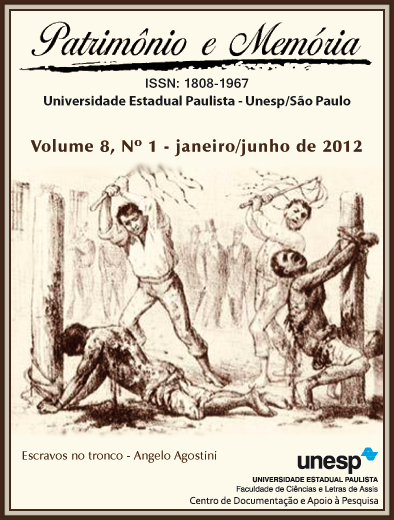The Sovereignty of Constitutional Countries
The Public and Common People in Angelo Agostini’s Cartoons
Keywords:
Illustrated Periodicals, Angelo Agostini, 19th Century, Public, Common PeopleAbstract
Illustrated periodicals from 19th century Brazil are a subject that has been evoking increasing interest among scholars from several different research fields. This trend has led to an enhanced awareness of the potentialities and difficulties of studying this subject, and the present article aims at contributing to that process. More specifically, it intends to stress that the illustrated press is a valuable type of source material for the analysis of the concepts pertaining to the “public” and “common people” that were typical in the Brazilian political culture of the second half of the 19th century. Focusing on images created by Angelo Agostini (1843-1910) – one of the most popular drawing artists of the Province of Sao Paulo and of the Imperial Court in Rio de Janeiro, and specifically on his work of the 1860s and 1870s, the intention is to reveal meanings embedded in his cartoons, which were addressed to the readership in general, and to the Empire’s citizens in particular. The premise is that, as the themes of “common people” and “ the public” are important figures in Agostini’s newspapers, investigating their images is an excellent way to advance the research on this author, who remains one of greatest enigmas of the 19th century Brazilian satirical weekly publications.
References
ALBUQUERQUE, Wlamyra R. de. O jogo da dissimulação: abolição e cidadania negra no Brasil. São Paulo: Companhia das letras, 2009.
AZEVEDO, Silvia Maria. Brasil em imagens: um estudo da revista Ilustração Brasileira. São Paulo: Editora da Unesp, 2010.
BALABAN, Marcelo. Poeta do Lápis: sátira e política na trajetória de Angelo Agostini no Brasil imperial (1864-1888). Campinas: Ed. da Unicamp, 2009.
CARVALHO, José Murilo de Carvalho (org.). Nação e cidadania no império: novos horizontes. Rio de Janeiro: civilização brasileira, 2007.
CHALHOUB, Sidney. Escravidão e cidadania: a experiência histórica de 1871. In:_______. Machado de Assis, historiador. São Paulo: Companhia das Letras, 2003. p. 133-291.
DOYLE, Arthur Conan. “O mistério do Vale Boscombe”. In:______. As aventuras de Sherlock Holmes. Rio de Janeiro: Zahar, 2011. p. 104-40.
GRIMBERG, Keila. O fiador dos brasileiros – cidadania, escravidão e direito civil no tempo de Antonio Pereira Rebouças. Rio de Janeiro: Civilização Brasileira, 2002.
KNAUSS, Paulo.; MALTA, Marize.; OLIVEIRA, Cláudia de.; VELLOSO, Mônica Pimenta (orgs.). Revistas Ilustradas: modos de ler e ver no segundo reinado. Rio de Janeiro: Mauad, 2011.
KRAAY, Hendrik. “Reconsidering Recruitment in Imperial Brazil”. The Americas, v. 55, n.1, p.1-33, jul. 1998.
LIMA, Herman. História da Caricatura no Brasil. vol. 1, 2, 3, 4. Rio de Janeiro, José Olympio, 1963.
LUSTOSA, Isabel (org). Imprensa, humor e caricatura: a questão dos estereótipos. Belo Horizonte: Editora da UFMG, 2011.
MARINGONI, Gilberto. Angelo Agostini: a imprensa ilustrada da Corte à Capital Federal, 1864-1910. São Paulo: Devir Livraria, 2011.
SANTOS, Délio Freire dos. Primórdios da imprensa caricata paulistana: O Cabrião. In:______. Cabrião: semanário humorístico editado por Ângelo Agostini, Américo de Campos e Antônio Manoel dos Reis, 1866-1867. 2.ed. São Paulo: Editora da Unesp; Imprensa Oficial do Estado, 2000. p. XI-XLV.
Downloads
Published
How to Cite
Issue
Section
License
Copyright (c) 2012 Patrimônio e Memória

This work is licensed under a Creative Commons Attribution 4.0 International License.
All the content of the journal, except where noted, is licensed under a Creative Commons BY attribution license.


